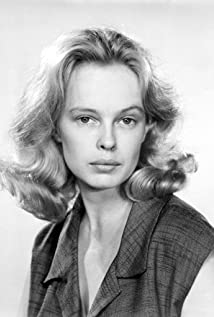Sandy Dennis
It would not be easy for anyone to out-do one of American theater's finest thespians, but somehow actress Sandy Dennis managed to even out-quirk the legendary Geraldine Page when it came to affecting nervous ticks and offbeat mannerisms on stage and in film. She and Page had few peers when it came to the neurotic-dispensing department. The two Actor's Studio disciples developed fascinating characterizations that seemed to manifest themselves outwardly to such physical extremes and, like a bad car accident, their overt styling was capable of both drawing in, and repelling audiences. There was no gray area. Either way, both had a searing emotional range and were undeniably transfixing figures who held up Oscar trophies to prove there was a "Method" to their respective madness. Sandy's signature quirks - her stuttering, fluttering, throat gulps, eye twitches, nervous giggles, hysterical flailing - are all a part of what made her so distinctive and unforgettable. Her untimely death of cancer at age 54 robbed the entertainment industry of a remarkable talent.
The Nebraska-born-and-bred actress was born Sandra Dale Dennis in Hastings, on April 27, 1937, the daughter of postal clerk Jack Dennis and his secretary wife Yvonne. Living in both Kenesaw (1942) and Lincoln (1946) while growing up, she and brother Frank went to Lincoln High School with TV host Dick Cavett. Her passion for acting grew and grew while still at home. A college student at both Nebraska Wesleyan University and the University of Nebraska, she eventually found her career direction after appearing with the Lincoln Community Theater Group.
The toothy actress left Nebraska and towards the Big Apple at age 19 just to try her luck. An intense student of acting guru Uta Hagen, Sandy made her New York stage debut in a Tempo Theatre production of "The Lady from the Sea" in 1956 and that same year won her first TV role as that of Alice Holden in the daytime series Guiding Light (1952). A year later she made it to Broadway as an understudy (and eventual replacement) for the roles of Flirt and Reenie in the William Inge drama "The Dark at the Top of the Stairs," directed by Elia Kazan at the Music Box Theatre. She toured with that production and also found regional work in the plays "Bus Stop" and "Motel" while continuing to shine as a budding New York fixture in "Burning Bright," "Face of a Hero" and "Port Royal".
Along with fellow newcomers Gary Lockwood and Phyllis Diller, Sandy made her movie debut in playwright Inge's Splendor in the Grass (1961), a movie quite welcoming of Sandy's neurotic tendencies. In the minor but instrumental role of Kay, she is an unwitting instigator of friend Deanie's (played by an ambitiously unbalanced Natalie Wood) mental collapse. Despite this worthy little turn, Sandy would not make another film for five years.
Instead, the actress set her sights strongly on the stage and for this she was handsomely rewarded, most notably in comedy. After appearing in a two-month run of the Graham Greene drama "The Complaisant Lover" at the Ethel Barrymore Theatre in 1961, stardom would be hers the very next year with her outstanding social worker role in the lighter-weight "A Thousand Clowns". Winning the Theatre World as well as the coveted Tony Award for her performance, she continue her run of prizes with a second consecutive Tony for her sexy turn in the comedy "Any Wednesday" (1964). Having made only one picture at this juncture, Sandy was not in a good position to transfer her award-winning characters to film and when they did, they went to Barbara Harris and Jane Fonda, respectively.

